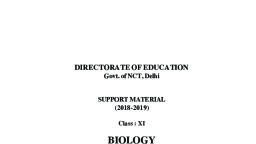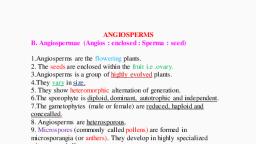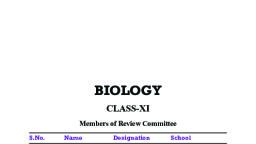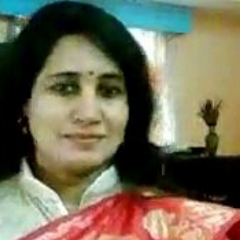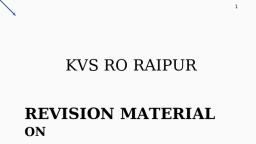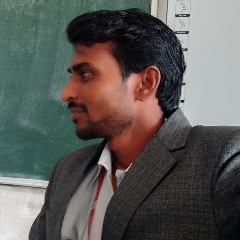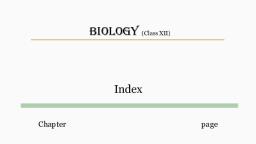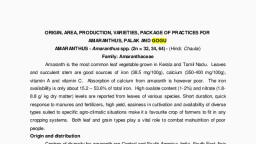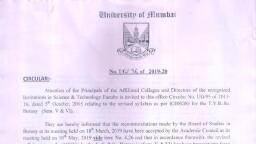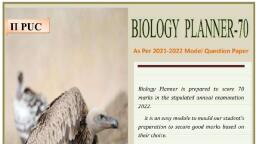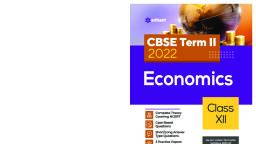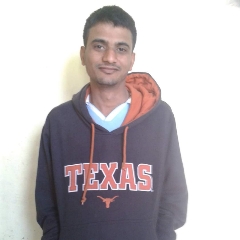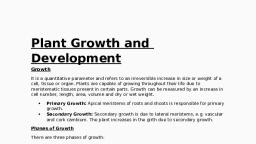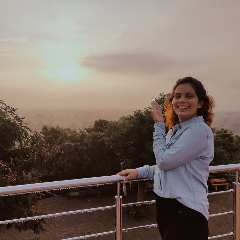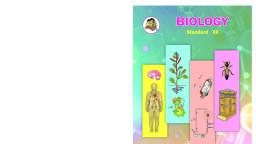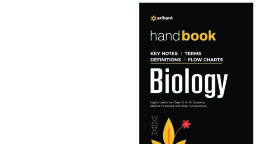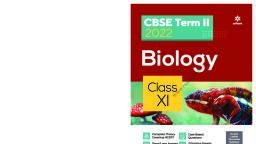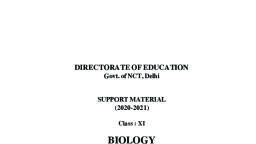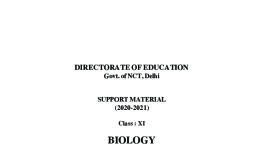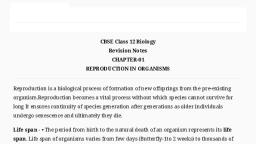Page 1 :
FREE MEMORY MAPS, ALL CHAPTERS
Page 2 :
FOR MORE FREE CONTENT,, , SUBSCRIBE HERE!, , CONTACT US ON:, , FOLLOW US ON:, , INSTAGRAM, , FACEBOOK, , YOUTUBE, , WHATSAPP, , CALL US!, , MAIL US!
Page 3 :
Biology (Std. XII), , Reproduction in, Lower and Higher Plants, , 1, (Total Marks : 06), , (Marks with Option : 08), , MEMORY MAPS, , Reproduction, The process by which organisms produce one or more individuals resembling its parents., Asexual, Uniparental, types, (i) Binary fission e.g. Bacteria, (ii) Budding. e.g. Yeast, (iii) Sporulation - by spores, , (a) Motile spores, e.g. Chlamydomonas, , (b) Non-motile spores, Conidia, e.g. Penicillium, (iv) Fragmentation, e.g. Filamentous algae, , Vegetative reproduction, Type of asexual reproduction in, flowering plants, Natural, , Sexual, Fusion of two, haploid gametes, Artificial, , Tuberous root, Stem tuber, Runner, Leaf, e.g. Sweet Potato e.g. Potato e.g. Cynodon e.g. Bryophyllum, , Artificial Vegetative Propagation, Cutting, (a) Stem cutting, e.g. Sugarcane, (b) Root cutting, e.g. Apple, (c) Leaf cutting, e.g. Peperomia, , 1, , Budding, e.g. Rose/Mulberry, , (1), , Grafting, (a) Tongue or Whip grafting, e.g. Rose, (b) Wedge, e.g. Apple, (c) Crown, e.g. Citrus, (d) Inarching, e.g. Mango
Page 5 :
3, , Biology (Std. XII), , Post fertilization changes, (i) Development of Embryo, Zygote (2n) → 2 celled embryo → Basal cell → Suspensor, 2 celled embryo → Apical cell, (small), heart shaped, embryo, , horse shoe shaped, embryo, , (Embryonal, cell), Embryonal, axis, , Octant, stage, , Spherical, mass of cells, , Plumule (Embryo shoot), Radicle (Embryo root), Cotyledons, (i) Two Cotyledons → Dicot, (ii) One Cotyledon → Monocot, , (ii) Development of Endosperm (3n) - nutritive tissue, Nuclear, Cellular, (iii) Formation of fruit and seed, , Helobial, , An independent daughter plant is produced from any vegetative part of mother plant under, favourable conditions as follows., By Roots, by tuberous roots - modified roots for, storage and vegetative reproduction, through adventitious buds (slips), Simple tuberous, roots (simple), e.g. Sweet potato, , Fasciculated, e.g. Asparagus, , (i) Cutting, Small pieces of the plant, parts develop into new, plant., Convenient cheap method., (a) Stem cutting, e.g. Chinarose, Citrus, (b) Root cutting, e.g. Guava, apple, (c) Leaf cutting, e.g. Peperomia,, Bryophyllum, , By Stem, By Leaf, (i) by stem tuber - The apex e.g. (i) Bryophyllum - In this, of underground branch, leaf,, adventitious, swells - it has ‘eyes’ buds at the notches develops into new plant, independent plants, e.g. Potato, (ii) Begonia - Foliar buds, on the surface of the, (ii) Runner, prostrate, leaf, subaerial branch, e.g. Oxalis, , (ii) Grafting, It is a technique of joining, together parts of two different, plants - unite and continue as, one plant., (a) Tongue or whip grafting, e.g. Citrus, Mango, (b) Wedge of cleft grafting, e.g. Apple, Pear etc., (c) Crown grafting, e.g. Citrus, (d) Approach grafting, e.g. Mango, Chikoo etc., , (iii) Budding, A kind of grafting in which, a single bud with bark and, living tissue is grafted on the, particular stock., e.g. Mulberry, Rose etc.
Page 7 :
Reproduction in, Lower and Higher Animals, , 2, (Total Marks : 06), , (Marks with Option : 08), , MEMORY MAPS, , Introduction, , , The process of formation of life from pre-existing life is called reproduction., , Types of Reproduction, , Asexual Reproduction, , Sexual Reproduction, , Human Male Reproductive System, , , , , , Male reproductive system consists of organs for production of gametes and copulation., Male gonads are known as testes which produce male gametes known as sperms., , Parts of sperm, Head, Neck, Middle piece, Tail, , , , Male reproductive system consists of the following parts :, Scrotum : It protects the testes., Pair of testes : These are the primary sexual organs., Epididymis : It is a thick compact body lying behind testis in scrotum., Vasa deferentia : These are a pair of tubular structures arising from, cauda epididymis., Ejaculatory duct : It is formed by joining of vas deferens and seminal, vesicle., Urethra : It provides common pathway for the flow of urine and semen., Penis : It is cylindrical, erectile and pendulous copulatory organ., Seminal vesicle : It secretes seminal fluid rich in fructose, fibrinogen, and prostaglandins., Prostate gland : It secretes prostatic fluid., Cowper’s glands : They secrete a viscous fluid which neutralizes, acidity of urethra., Semen : It is ejaculated during sexual intercourse., , (5)
Page 8 :
6�, , Reliable Series, , Human Female Reproductive System, , , The female reproductive organs are divided into external organs and internal organs., , External Organs, Labia majora : They are 2 large folds forming, the boundary of vulva., Labia minora : They are lip-like folds located, medially to labia majora., Mons pubis : It is a fleshy elevation., Clitoris : It is a small erectile organ., Vestibule : It is a depression of vulva enclosing, the vagina and the urethral opening., Hymen : It is a thin layer of mucous membrane., Vestibular glands : They secrete a lubricating, fluid., Breast : Milk is released from the breast., , Internal Organs, Ovaries : They are the primary sex organs of, the female reproductive system., Fallopian tube : It conducts egg or ovum, discharged from the ovary to the uterus., Uterus : It receives the ovum from the fallopian, tube., Vagina : It is a copulatory passage as it, receives the erect penis during intercourse., , Menstrual cycle, , , It starts at the time of puberty and is called menarche., Menstrual cycle includes four phases, , Menstrual phase Proliferative phase Ovulatory phase Luteal phase, Gametogenesis, , , , , The process of formation of gametes in sexually reproducing animals is called gametogenesis., The process of formation of male gamete is called spermatogenesis., The process of formation of female gamete is called oogenesis., , , , , , , , , , , , , , Spermatogenesis, It includes 3 phases :, Multiplication Phase, Growth Phase, Maturation Phase, , Oogenesis, It includes 3 phases :, Multiplication Phase, Growth Phase, Maturation Phase, , Fertilization, , , , The fusion of haploid male and haploid female gamete to form a diploid zygote is called, fertilization., Mixing of chromosomes of male and female pronucleus is known as karyogamy.
Page 9 :
7, , Biology (Std. XII), , Embryonic development upto 3 germinal layers, , , , Cleavage converts the zygote into a mass of cells called morula., It occurs during the passage of zygote from fallopian tube to uterus., , Cleavage and blastulation, A rapid mitotic division of, zygote forms a hollow spherical, multicellular developmental, stage called blastula., , Implantation, After the formation of, blastocyst by the 6th to 7th day, of fertilization, the embryo gets, attached deep inside the wall of, the uterus and this process is, called implantation., , Gastrulation, Formation of gastrula, from blastula is known as, gastrulation., , Pregnancy, , , , , The condition of carrying one or more embryos in the uterus is called pregnancy or gestation., It is divided into 3 trimesters : (a) First trimester (b) Second trimester and (c) Third trimester., The process of formation of female gamete is called oogenesis., Placenta, , , , The intimate connection established between foetal membrane and uterine wall is known as, placenta., Parturition, , , , , The act of expelling a full-term baby from mother’s uterus at the end of pregnancy is called, parturition., Parturition is divided into 3 stages :, (a) Dilation or first stage (b) Expulsion or second stage and (c) Placental or third stage., Lactation, , , , The process of production of milk by mammary glands at the end of pregnancy is called, lactation., , Reproductive Health : Birth Control, The birth control methods which deliberately prevent fertilization are referred to as, contraceptives., These methods are of two types :, v Temporary method :, , (1) Rhythm method, (2) Coitus interruptus, (3) Chemical means, , (4) Mechanical means, (5) Physiological device, (6) Other contraceptives, v Permanent method :, , Surgical intervention : It blocks gamete transport and prevents pregnancy.,
Page 10 :
8�, , Reliable Series, , Sexually Transmitted Diseases, , , , They are also known as Veneral Diseases and are spread by sexual intercourse with the, infected person., Syphilis and gonorrhoea are the example of veneral diseases., v Syphilis is caused by Treponema pallidum and affects mucous membrane in genital, rectal, and oral regions and causes lesions., v Gonorrhoea is caused by Neisseria gonorrhoeae and victim feels burning sensation and, pain during urination., ◄● ● ● ● ● ● ●►
Page 11 :
Inheritance and Variation, , 3, (Total Marks : 04), , (Marks with Option : 06), , MEMORY MAPS, , (1), , (2), , (9)
Page 12 :
10�, , (3), , (4), , (5), , Reliable Series
Page 13 :
Biology (Std. XII), , (6), , (7), , (8), , 11
Page 14 :
12�, , Reliable Series, , (9), , (10), , ◄● ● ● ● ● ● ●►
Page 15 :
Molecular Basis of Inheritance, , 4, (Total Marks : 04), , (Marks with Option : 06), , MEMORY MAPS, , DNA as a Genetic Material - Following experiments using Bacteria and virus., (i) Griffith’s experiment of Transforming principle., (ii) Avery, MacLeod and McCarty experiment - proved transforming principle is nothing but DNA., (iii)Hershey - Chase experiment - Proved DNA is the genetic material., , Packing of genetic material - Nucleosomes [DNA and histone octamer], , DNA Replication (Semi conservative), Activation of nucleotides., Unwinding of DNA strand - formation of Replication fork., Synthesis of new stands - leading and lagging strands., Formation of DNA daughter molecules., , (13)
Page 16 :
14�, , Reliable Series, , Genetic code having triplets of nucleotides called codons., Total number of codon - 64, Termination codons - 03 UAG (amber). UAA (ochre) and UGA (opal), Remaining 61 codons are sense codons - code for 20 amino acids., Central dogma of Protein synthesis, , Gene expression and gene regulation :, Operons → Clusters of genes with related functions., → Structural genes and their control elements (i) promoters (ii) operators, Lac Operon → Proposed by Jacob and Monad which explains gene expression and , regulation in E.coli., → An example of negative control of transcription initiation., ◄● ● ● ● ● ● ●►
Page 17 :
Origin And Evolution Of Life, , 5, (Total Marks : 04), , a., b., c., d., , Origin of life, , Chemical Evolution of Life, ●, ●, ●, ●, , Self assembly, Theory of Origin of Life, Urey and Miller Experiment, RNA World Hypothesis, , (Marks with Option : 06), , Theory of Special Creation, Cosmozoic theory/ Theory of Panspermia, Theory of spontaneous generation (Abiogenesis), Theory of biogenesis, , Darwinism, Mutation Theory, ● Postulates, ● Postulates, ● Evidences of, ● Objections to, Darwinism, Mutation theory, ● Drawbacks and, Objections to Darwinism, Mechanism of Organic Evolution, , Origin of Evolution, Modern Synthetic Theory, A. Genetic variations, (i) Gene mutation, (ii) Gene Flow, (iii) Genetic recombination, (iv) Genetic drift, (v) Chromosomal aberration, B. Natural Selection, Industrial Melanism, C. Isolation, (i) Geographical, (ii) Reproductive, (Types of isolating, mechanisms), , ● Mutation, ● Gene Recombinations, ● Gene flow, ● Genetic drift (Founder effect), ● Natural selection, ● Isolation, ● Speciation, ● Hardy- Weinberg principle, ● Adaptive Radiation, , Types of Natural, Selection:, a. Stabilizing, b. Directional, c. Disruptive, , Evidences of Organic Evolution, , Palaeontological evidences, ● Types of fossils, ● Significance of Palaeontology, ● Connecting links, Speciation, , Morphological Evidences, ● Homologous organs, ● Analogous organs, ● Vestigial organs, ● Molecular evidences, , a. Intra-specific speciation, (i) Allopatric speciation, (ii) Sympatric speciation, b. Interspecific speciation, Hybridization, Geological time scale, Human Evolution, (15)
Page 18 :
Plant Water Relation, , 6, (Total Marks : 05), , (Marks with Option : 07), , MEMORY MAPS, , Movement of substances, , Short distance movement, , Long distance movement, Occurs by, , Occurs by, , Mass or Bulk, flow (Translocation), , Diffusion, Active transport, , Types of transpiration, , Cuticular, transpiration, , Stomatal, transpiration, , Lenticular, transpiration, , ● Occurs through lenticels, ● Contributes to 0.1-1% of total, transpiration., , ● Occurs through cuticle, ● Contributes 8 - 10% of total transpiration., , ● Occurs through stomata., ● Contributes 90-93% of total transpiration., , (16)
Page 19 :
17, , Biology (Std. XII), , Factors affecting translocation of solutes, Temperature, , Light, Reduction in, translocation., , 25°C to 35°C is optimum temperature., , light, , intensity, , reduces, , Oxygen, , Metabolic control, , It is aerobic condition, so O2, is must., , As this process requires energy, so all the, factors which affect respiration also affect, translocation., , Moisture stress, It reduces rate of translocation., , Means of Transport, , Facilitated, diffusion, , Diffusion, , Active transport, , ●, ●, ●, ●, , Against concentration gradient, Uphill transport, ATP used., Utilizes carrier, protein, ● Faster than passive, , ● Along concentration gradient, ● Passive downhill transport, ● No energy is utilised., , ● Along concentration gradient, ● Passive downhill transport, ● No energy is utilised., ● Through fixed membrane transport proteins, , Carrier Proteins, , Channels proteins, , ● Bind to the particular solute to be, transported., ● Some allow two types of molecules to, move across the membrane., , ● Allow diffusion of the solutes., , Ion channel, ◄● ● ● ● ● ● ●►, , Porins
Page 20 :
7, , Plant Growth and Mineral Nutrition, , (Total Marks : 05), , (Marks with Option : 07), , MEMORY MAPS, , Growth, Quantitative, (Increase in size, volume), , Qualitative, (Development and differentiation), Phases of Growth, , Cell division, ● 1st phase, ● Formative phase, ● Takes longer time, ● Represents Log phase, ● Cell divides by mitosis, , Cell enlargement, ● 2nd phase, ● Elongation phase, ● Takes place quickly, ● Exponential phase, ● Cell elongates in size, , Cell maturation, ● 3rd phase, ● Maturation phase, ● Slower phase, ● Stationary phase, ● Cell matures and, differentiates, , Conditions of Growth, (All the parameters are required at optimal levels), Temperature, , Oxygen, , Water, , Light, , Nutrients, , Growth Rate, Absolute growth rate, ● Ratio of change in number of cells, over time., ● AGR : dn/dt, , Relative growth rate, ● Growth of particular system per, unit time., ● RGR : AGR/n, , Types of growth, Arithmetic growth, Geometric growth, ● One daughter cell divides into two ● Growth takes place through 3 phases, ● Linear growth curve, ● Sigmoid ‘S’ shaped growth curve, , (18)
Page 21 :
19, , Biology (Std. XII), , Growth Curve, Lag phase, ● Initial growth phase, ● Preparatory stage, ● New cells formed, , Exponential phase, ● Second growth phase, ● Maximum growth, ● Cell elongates, , Stationary phase, ● Third and last growth phase, ● Growth remains steady, ● Cell differentiation, , Development in plants, Seed germination, Meristem, Cell division, Plasmatic growth, Cell elongation, Cell maturation, Mature cell, Senescence, Death, Growth Hormones, Hormone helps in the overall growth and development., There are 5 growth hormones. Also called as phytohormones or growth regulators., Abscisic acid, Auxin, Gibberellin, Cytokinins, Ethylene, Photoperiodism, The response of plants towards the photo period for inducing the flowering., Plants are classified into three types on the basis of the photo period, Long day plants, ● Require more sunlight, for flowering, ● Also called short night , plants, ● Darkness inhibits, flowering, ● Eg : Spinach, Wheat., , Short day plants, ● Require less sunlight, for flowering, ● Long night plants, ● Takes place quickly, ● Light inhibits flowering, ● Dahlia, Marigold, , Day neutral plants, ● Duration of sunlight, does not matter, ● Photo neutral plants, ● Flowering is not, disturbed by light or, dark, ● Cucumber , Tomato, , Vernalization, (The cold/ chilling treatment given to the plants in order to break dormancy of seed, bud or induce, flowering), (Advantages : Crops can be produced earlier, in any season, disease free, fungal resistant)
Page 22 :
20�, , Reliable Series, , Mineral Nutrition, (Minerals help in the overall growth and development. The minerals as per, the requirement are classified into two types.), Macro nutrients, ● Required in large quantity, ● C, H, O, N, K, Ca, S, Fe, Mg., , Micro nutrients, ● Required in trace quantity, ● Cu, Zn, Mo, Mn, Cl., ● Acts as the activators of enzymes., , ● Part of cell structure, , (Deficiency of these mineral nutrients causes Chlorosis, Necrosis, Senescence or even death of the tissue, whereas excess causes toxicity), Nitrogen cycle, Atmospheric nitrogen, , Biological fixation, , Industrial fixation, , NH3, , Electrical fixation, , Nitrification, NO2, Soil ‘N’ Pool, , Denitrification, , NO3, , Ammonification, , Uptake, , Decaying biomass, , Plant biomass, Animal biomass, , ◄● ● ● ● ● ● ●►
Page 23 :
Respiration and Circulation, , 8, (Total Marks : 07), , (Marks with Option : 10), , MEMORY MAPS, , Respiration and Circulation, , Organs of Respiratory, Exchange, , Human Respiratory, system, , Mechanism of, respiration, , Gaseous exchange in, Nostrils, Pharynx,, plants and Respiration Larynx, Trachea,, in animals., Bronchi, Lungs, Alveoli, , Herring-Breuer reflex, , Modified Respiratory, Movements, Coughing, Sneezing,, Yawning, Laughing,, Crying, Hiccuping, , A. Breathing, Inspiration, Expiration, , Regulation of, Breathing, , Common Respiratory, Disorders, , Artificial ventilation, and ventilator, , Emphysema,, Bronchitis,, Pneumonia, Asthma,, Occupational, Respiratory, Disorders, , B. External respiration, , C. Internal respiration, , Gaseous exchange, at alveoli, Pulmonary volumes, and Lung volumes, , (21), , i. Transport of oxygen:, Bohr effect, Haldane, effect, O2 dissociation, curve, ii. Transport of CO2:, by plasma, by, bicarbonates, chloride, shift (Hamburger’s, phenomenon), by red, blood cells, , D. Cellular respiration
Page 24 :
22�, , Reliable Series, , Transportation in living organisms, , Circulation in Animals, , Circulatory System in, Human, , Blood Related, Disorders, , Blood Pressure, , Blood vascular system,, Types of blood vascular, system : Open and, closed circulation,, single and double, circulation, Blood and Coagulation, , Heart, , Blood Vessels, , (i) Plasma, ● External structure of, (ii) Blood cells/corpuscles heart, ● Internal structure of, heart, ● Pumping action of, heart, ● Heart rate, ● Stroke volume, ● Cardiac output, ● Conducting system of, heart, ● Working mechanism, of human heart, Cardiac cycle :, (a) Atrial Systole, (AS), (b) Ventricular, Systole (VS), (c) Joint, systole, ● Regulation of cardiac, activity, ● Electrocardiogram, (ECG), Erythrocytes, (Red blood corpuscles), , ● Artery, ● Vein, ● Portal vein, ● Capillary, ● Pulse, , Leucocytes, (White blood corpuscles), , ◄● ● ● ● ● ● ●►, , Thrombocytes, (Blood Platelets), , Lymphatic System, ●, ●, ●, ●, , Lymph, Lymph capillaries, Lymph vessels, Lymph nodes
Page 28 :
Human health and diseases, , 10, (Total Marks : 03), , (Marks with Option : 04), , MEMORY MAPS, , Concept of Immunology, The study of structure and function of immune system is called basic immunology., Immunity, Immunity refers to the general ability of a body to recognize, neutralize, destroy and eliminate, foreign substance and resist a particular infection., Types of Immunity, Innate Immunity, Innate immunity is the inborn capacity of body, to resist invasion of microbes in the body., , Acquired Immunity, The immunity that individuals acquire during, their life is called acquired immunity., , Acquired Active Immunity, It is a resistance developed by an individual, as a result of antigenic stimulus of invading, pathogens or vaccine., , Acquired Passive Immunity, Passive immunity is acquired when readymade, antibodies are received by the body., , Natural Acquired, Active Immunity, This immunity is, acquired due to, infection., , Artificial Acquired, Active Immunity, This immunity is, acquired artificially, by vaccination., , Natural Acquired, Passive Immunity, It is acquired before, birth and at birth, through maternal, antibodies., , (26), , Artificial Acquired, Passive Immunity, This immunity, is acquired by, injecting previously, prepared antibodies, using serum from, humans or animals.
Page 29 :
27, , Biology (Std. XII), , Structure of Antibody, The protective chemicals, produced by immune cells, in response to antigens, are called as antibodies., The are glycoproteins., Antibody is a Y-shaped, structure., , Antigen-Antibody, Complex, Combining site of antigen, to antibody is called, epitope., Combining site of, antibody to antigen is, called paratope., , Antigens on Blood Cells, Landsteiner found two, antigens on surface of, RBCs and named them as, Antigen A and Antigen B., , Pathogens and Parasites, The term pathogen is restricted to living agents like fungi, yeast, bacteria, virus etc. capable of, causing disease., The term parasite refers to an organism who lives in or derives its nourishment from another, organism., Diseases, Amoebiasis Malaria Filariasis Ascariasis Typhoid Pneumonia Common cold Ringworm, , Cancer and AIDS, Cancer is a class of disease characterised by uncontrolled cell growth., AIDS is caused by HIV and it leaves the immune system vulnerable to variety of life-threatening, diseases., ◄● ● ● ● ● ● ●►
Page 30 :
Enhancement of Food Production, , 11, , (Total Marks : 04), , (Marks with Option : 06), , MEMORY MAPS, , Steps of plant breeding, Collection of variability from gene bank / germplasm, Evaluation and selection of parents, Hybridisation, Selection and Testing of superior recombinants, Testing and release of new cultivars, Objectives of plant breeding, , Higher yield, , Resistance to, disease and pest, , Improved quality, , Resistance to, abiotic stress, , Indian Hybrid crops and their varieties, , Wheat, , Rice, , Sugarcane, , Sonalika, Kalyansona, , Jaya, Padma, Ratna, , CO - 419, CO - 421, CO - 453, , (28), , Millets, , Hybrid maize, , Jowar, , Bajra, , Ganga-3, , CO-12, , Niphad
Page 33 :
Biotechnology, , 12, (Total Marks : 05), , (Marks with Option : 07), , MEMORY MAPS, , Tools of rDNA Technology, , Restriction enzymes, , Gel Electrophoresis, , Cloning vectors, , Competent host, , Restriction, Endonucleases, ↓, Recognises, palindromic sequence, of DNA and cut it, ↓, E.g. EcoRI, Bam HI,, Hind III, , To separate and, isolate, DNA, fragments, , Carriers of desired, DNA fragments, e.g. ● Plasmids, ● Cosmids, ● Viruses and, ● Artificial, chromosomes, like BAC, YAC, and MAC, , Cloning organisms, ● Bacillus, haemophilus, ● E.coli, ● Helicobacter pyroli, , (1) Isolation of DNA (gene) from donor organism, (2) Cutting of DNA at specific location, Steps in rDNA, Technology, , (3) Amplification of gene of interest using PCR, (4) Insertion of rDNA into the host cell or organism, (5) Obtaining desired gene product, , Advantages of Genetically modified crop plants, , Insect and pest, resistance, , Biofortification, , Modification, in post harvest, techniques, , Plants as, factories (or), Biopharmaceuticals, , Transgenic plants, producing edible, vaccines, , Effects of Biotechnology on Human Health, , Allergies, , Longterm effect, , New proteins, (31), , Food additives
Page 34 :
Organisms and Population, , 13, (Total Marks : 03), , (Marks with Option : 04), , MEMORY MAPS, , Biomes of the world, , Tropical rain, forest, , Coniferous, forest, , Grassland, , Temperate, forest, , Arctic and, Alpine Tundra, , Desert, , Types of niche, , Spatial niche or Habitat niche, , Multidimensional niche (or), Hypervolume niche, , Trophic niche, , Based on physical space of an, organism, , Based on trophic level in a food, chain, , Based on biotic and abiotic, factors (Hyper volume), , Major abiotic factors affecting organisms, , Temperature, , Water, , Light, , Soil, , Response of organisms to abiotic factors, , Regulation, , Conformation, , Migration, , Suspension, , Immigration (I), +, Natality (B), , +, , Population Density (N), –, Emigration (E), , (32), , –, , Mortality (D)
Page 35 :
33, , Biology (Std. XII), , Interaction between organisms, , Prey-predator, , Competition, , Commensalism, ◄● ● ● ● ● ● ●►, , Symbiosis, , Mutualism, , Parasitism
Page 36 :
Ecosystems and Energy flow, , 14, (Total Marks : 03), , (Marks with Option : 04), , MEMORY MAPS, , Ecosystem, A self regulating, self sustaining,, structural and functional unit of nature, , Natural ecosystem, , Artificial ecosystem, , pond, river, ocean, desert., forest, grassland etc., , farm land,, fish tank,, fish rearing pond, , Earth, (A big ecosystem), , Terrestrial ecosystems, Aquatic ecosystems, Spacial pattern (Biotic and abiotic, components vary due to space), Stratification, , Zonation, , ● Productivity (It is the rate of generation of biomass in an ecosystem)., GPP – R = NPP, , GPP = Gross Primary productivity, NPP = Net primary productivity, R = Respiratory losses, ●, , , , Decomposition, , The important steps of decomposition are, (1) Fragmentation, (2) Leaching, (3) Catabolism, (4) Humification, (5) Mineralization, (34)
Page 37 :
35, , Biology (Std. XII), , ● Energy flow, PAR – 50% of Total Radiation., (PAR – Photosynthetically Active Radiation) 2-10 % PAR is utilized by autotrophs, photoautotrophs, ● Energy flow is unidirectional., Food Chain, , Grazing, food chain, , Detritus, food chain, , Parasitic, food chain, , Ecological pyramids, , Pyramid of, Number, (upright or, inverted), , Pyramid, of Biomass, (upright or, inverted), , Pyramid, of Energy, (always, upright), , Nutrient cycle, , Gaseous cycle, , Sedimentary cycle, , Eg. Carbon,, Nitrogen, , Eg - phosphorous,, sulphur, calcium, , Reservoir is, atmosphere, fossil, fuel or ocean, , Reservoir is earth’s, crust or rocks or soil, , Carbon cycle, , Respiration, , Sedimentation, , Photosynthesis Decomposition, , Combustion
Page 38 :
36�, , Reliable Series, , Ecological Succession, Includes the processes, Nudation, Invasion, Ecesis, Aggregation, Competition and co- action, Reaction, Stabilization, Types of Ecological Succession, , Primary succession Secondary succession, It is the succession, that beings in an, area where no living, organisms, were, present before. e.g., newly cooled lava,, rocks, newly created, pond or reservoir., , It is the succession, that begins in areas, where natural biotic, communities, have, been destroyed. e.g., abandoned, farm, lands, burned or cut, forests, lands that, have been flooded., , Succession of plants, , Hydrarch, , Xerarch, , Succession in, water, , Succession in dry, area
Page 39 :
37, , Biology (Std. XII), , Ecosystem services, , (1) Supporting services, (Nutrient cycling, primary production, soil, formation, habitat provision, pollination.), (2) Provisioning services, (food, raw materials, genetic resources,, water,, medicinal, resources, and, ornamental resources), (3) Regulating services, (Carbon sequestration, predation, regulates prey population, waste, decomposition, detoxification), (4) Cultural services, (cultural, spiritual and historical,, recreational experiences, science and, education, and therapeutics), ◄● ● ● ● ● ● ●►
Page 40 :
Biodiversity, Conservation and, Environmental Issues, , 15, (Total Marks : 03), , (Marks with Option : 04), , MEMORY MAPS, , Biodiversity, Part of nature which includes differences in the genes among the individuals of a species, the variety and, richness of all plants and animal species at different scales in a space, local region, country and the world,, and the types of ecosystem both terrestrial and aquatic within a defined area., Levels of Biodiversity, , Genetic diversity, , Species diversity, , Ecological diversity, , Patterns of Biodiversity, (1) Latitudinal and Altitudinal gradient, (2) Species - Area relationship : log S = log C + Z log A, Productivity - Stability Hypothesis, By David Tillman, Hypothesis explains rich diversity leads to lesser variation in biomass production, hence, brings stability in ecosystem., Rivet Popper Hypothesis, By Paul Ehrlich, explains significance of biodiversity., Loss of Biodiversity, , Natural, The Evil Quartet, (Causes of biodiversity losses), , (1) Habitat loss and fragmentation, (2) Over-exploitation, (3) Alien species invasion, (4) Co-extinctions, , (38), , Manmade
Page 41 :
39, , Biology (Std. XII), Reasons for Conservation of Biodiversity, , (1) Narrowly utilitarian reasons, , (2) Broadly utilitarian reasons, , (3) Ethical reasons, , How to Conserve Biodiversity ?, , In situ conservation - (in house / natural place), , Ex situ conservation - (special place), , Environmental Issues, , Air Pollution, ■, ■, ■, ■, ■, ■, , CO2, CO, NO2, CFC, Dust, Smog, , Water Pollution, , ■ Sewage water, ■ Industry waste, ■ Heavy metals, , Noise Pollution, , ■ High decibel sound, ■ Loudspeaker, ■ Jet plane take off, , Thermal Pollution, , ■ Thermal plant effluent, ■ Radio-active plant effluent, , Amrita Devi, ■ Bishnoi woman of Rajasthan lost her life in Chipko movement., , Saalumara Thimmakka, ■ Indian environmentalist of Karnataka, noted her work in planting thousands of trees., ■ She was awarded with Padma Shri in 2019., , Moirangthem Loiya, ■ A middle class man from Manipur, dedicated his 17 years of life to restore Punshilok forest alone., , Sacred Groves, (1) Khasi and Jaintia hills – Meghalaya, Found in :, , (2) Western ghats – Maharashtra and Karnataka, (3) Aravali hills – Rajasthan, (4) Bastar, Chanda and Sarguja – Madhya Pradesh
Page 42 :
40�, , Reliable Series, Extinct Species, , ■ Dodobird , , ■ Stellar sea cow , , ■ Passenger pigeon , , ■ Great Indian Bustard, , Invasive Species, ■ Lantana , , ■ Water hyacinth, , ■ Carrot grass, , ■ African catfish, , ◄● ● ● ● ● ● ●►, , ■ Predator fish Nile Perch
